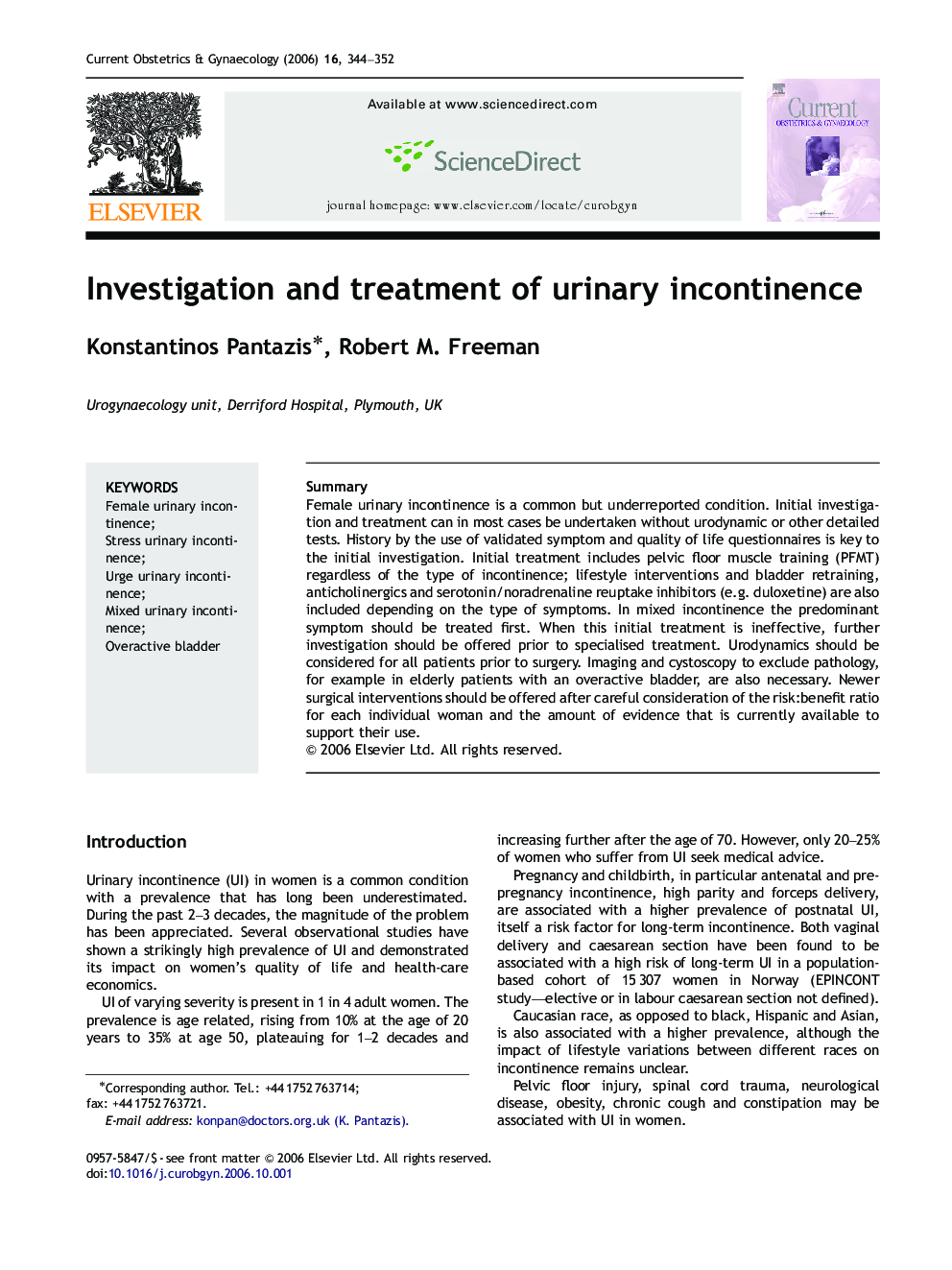| Article ID | Journal | Published Year | Pages | File Type |
|---|---|---|---|---|
| 3916542 | Current Obstetrics & Gynaecology | 2006 | 9 Pages |
SummaryFemale urinary incontinence is a common but underreported condition. Initial investigation and treatment can in most cases be undertaken without urodynamic or other detailed tests. History by the use of validated symptom and quality of life questionnaires is key to the initial investigation. Initial treatment includes pelvic floor muscle training (PFMT) regardless of the type of incontinence; lifestyle interventions and bladder retraining, anticholinergics and serotonin/noradrenaline reuptake inhibitors (e.g. duloxetine) are also included depending on the type of symptoms. In mixed incontinence the predominant symptom should be treated first. When this initial treatment is ineffective, further investigation should be offered prior to specialised treatment. Urodynamics should be considered for all patients prior to surgery. Imaging and cystoscopy to exclude pathology, for example in elderly patients with an overactive bladder, are also necessary. Newer surgical interventions should be offered after careful consideration of the risk:benefit ratio for each individual woman and the amount of evidence that is currently available to support their use.
